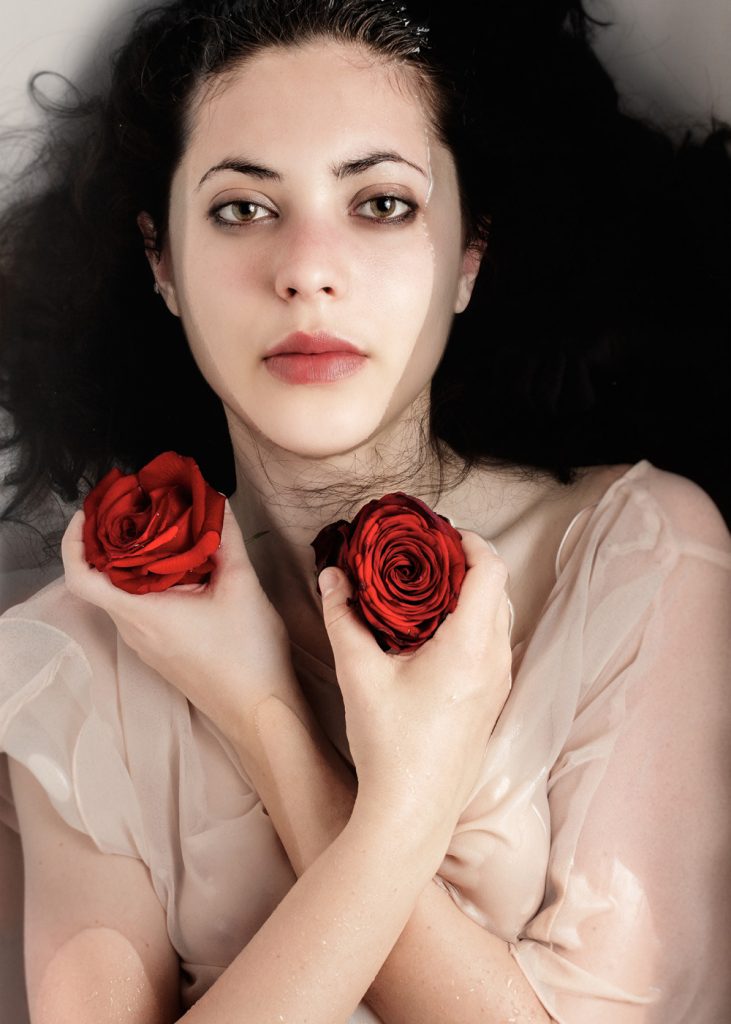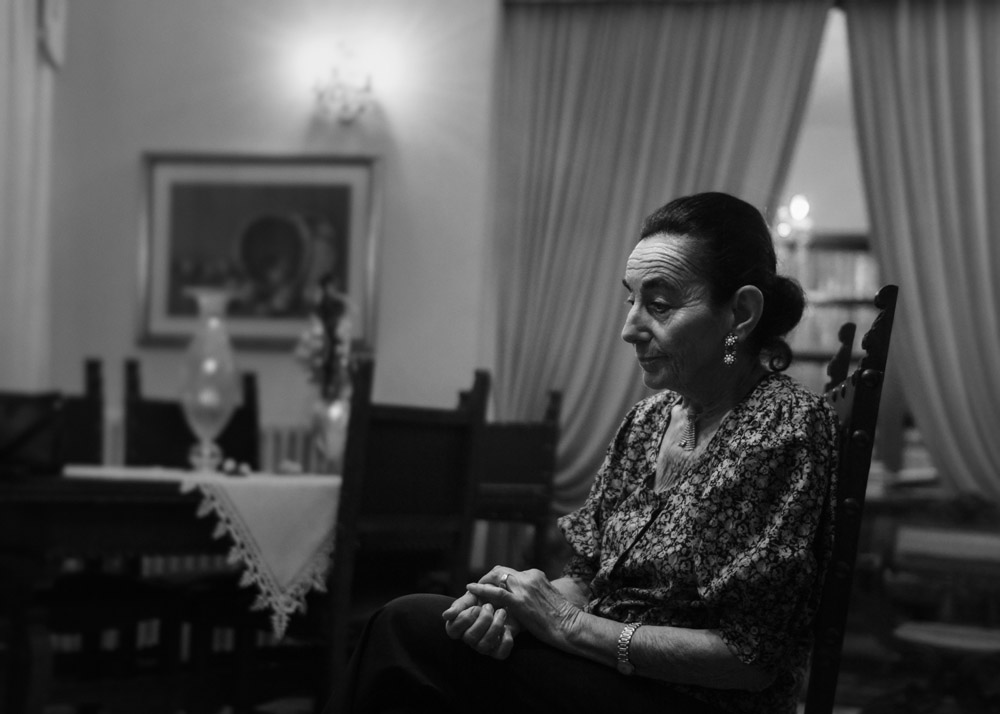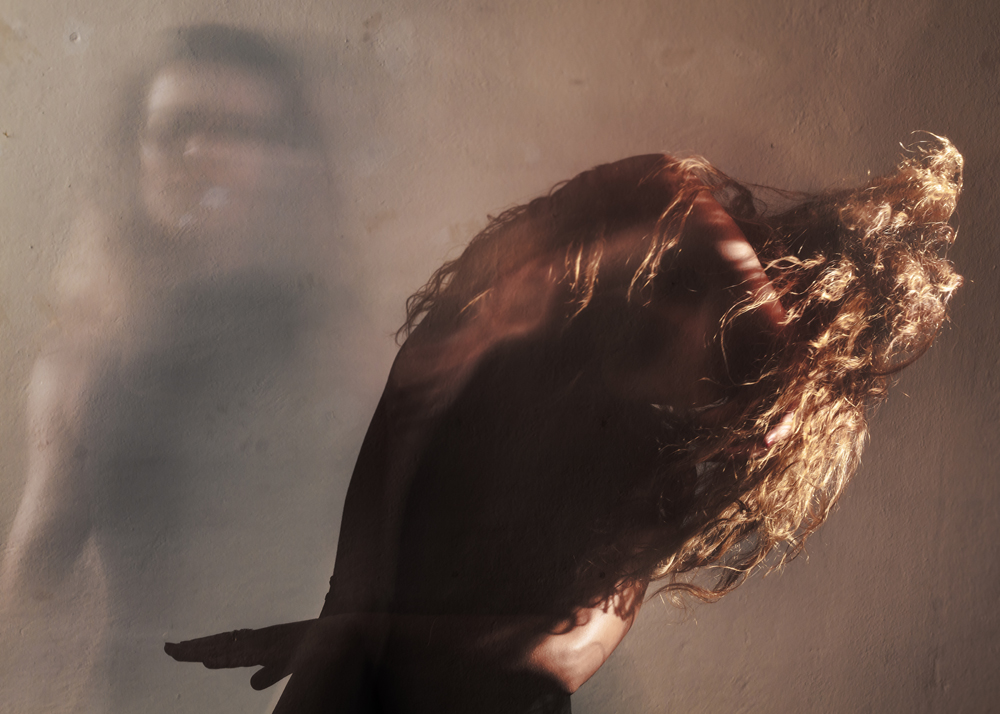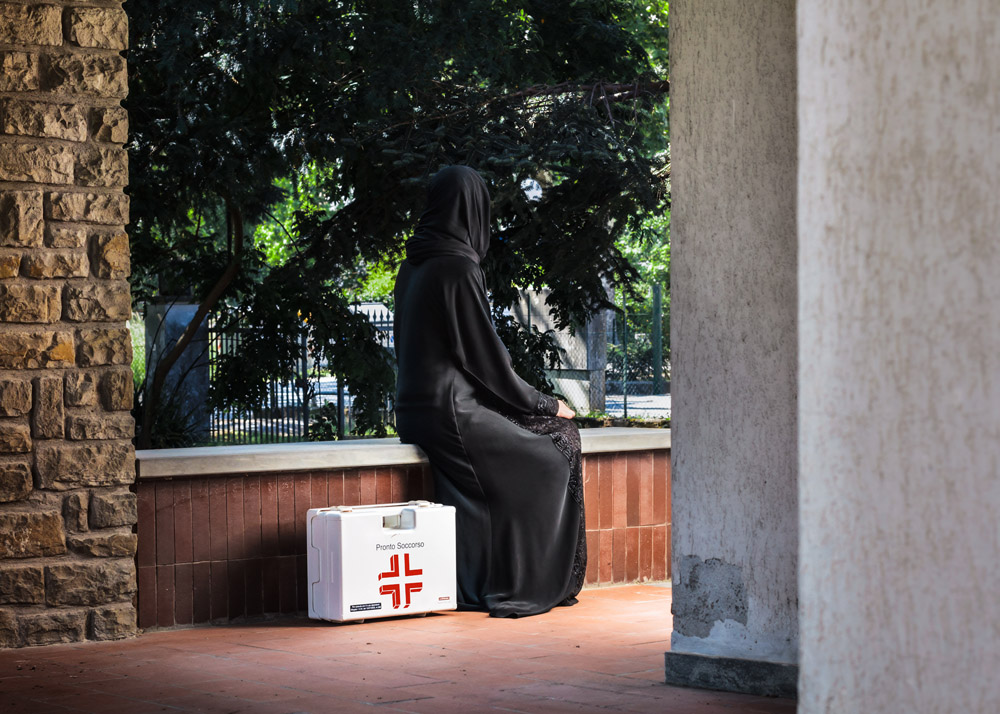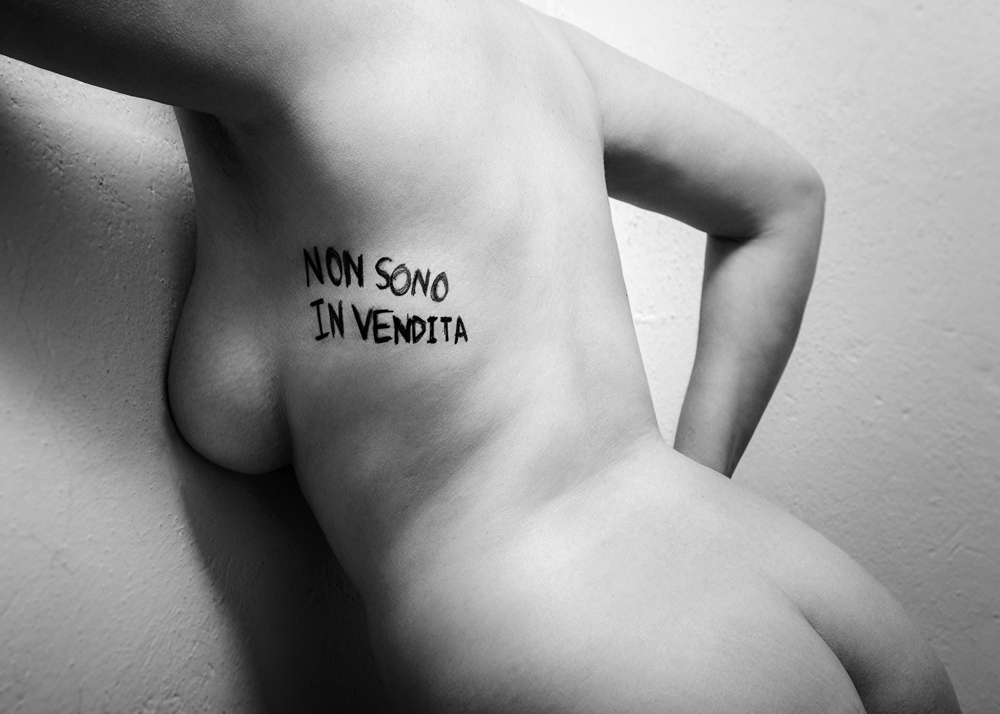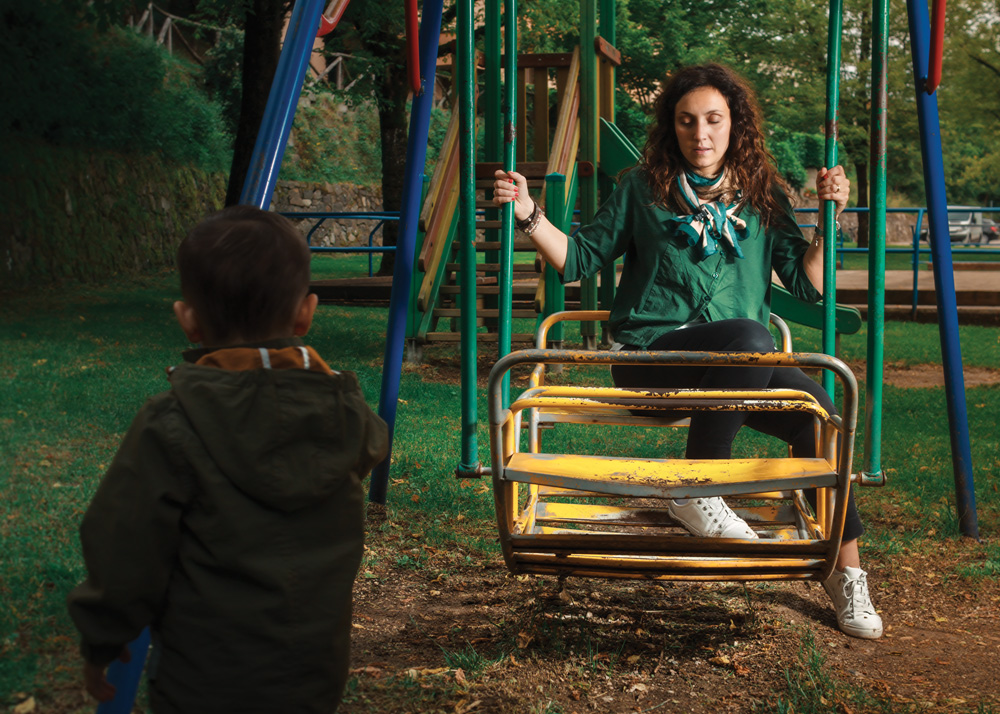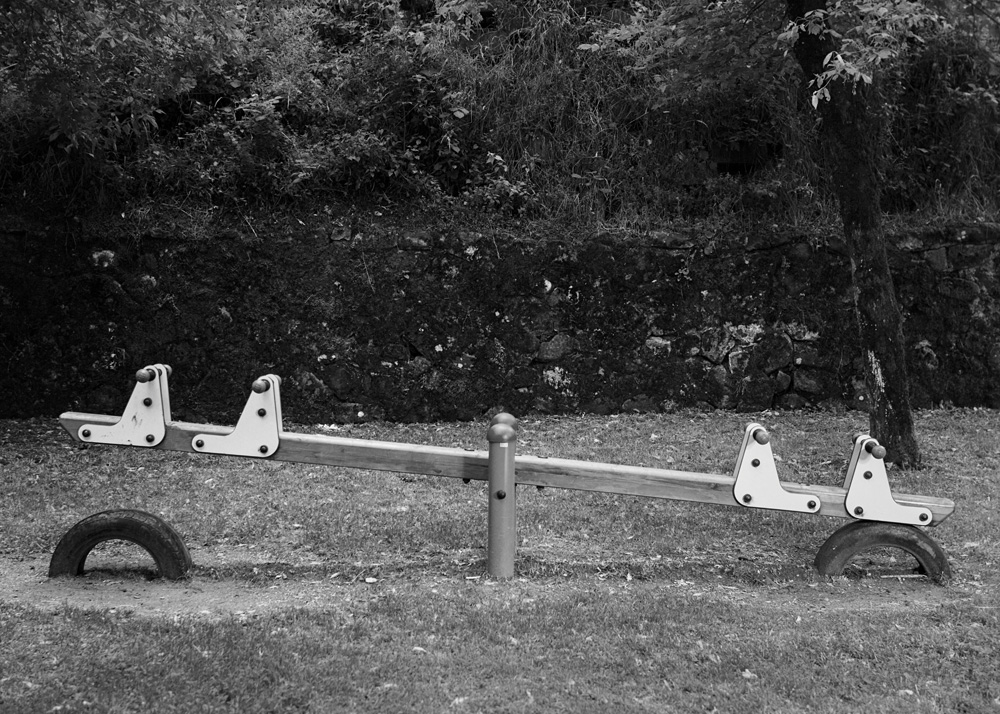Ofelia voleva soltanto nuotare (in English, Ophelia Only Wanted to Swim) is a testament to femininity pillaged by violence and hate. Haunting and powerful in its intimacy, the photographic exhibition holds a mirror to the ills of a society failing to stand up for the safety and rights of all women, and a voyeuristic media hungry to blame the victim.
The project marks a collaboration between Australian artist Samuel Webster, and Italian criminologist Mariantonietta Anania, combining photography and forensic investigation “to restore the image of the woman of our time”.
The traveling exhibition opened in Pieve Santo Stefano, Tuscany, on July 16th, and will move across the country throughout the coming months, with plans to travel to both Australia and the USA in the future.
We talked with Samuel and Mariantonietta shortly after the opening to discuss the importance of the exhibit, and the actions required to bring an end to femicide.
Can you tell us how the project originated?
Mariantonietta: After I saw yet another case of femicide on television, I decided to enter the field to work with crime prevention and training. My idea was to create a photographic exhibition that would represent the physical and psychological pain of mistreated women. I decided to involve Samuel in the project, having seen the quality of his work, and proposed everything over coffee one morning in February.
Samuel: She knew she wanted to create an exhibition on the theme of femicide, but not exactly how it would unfold. We worked over the next 5 months, honing ideas of representation and focusing on the social and criminal sides of the stories. It was a haunting experience to be creating representations of women who had been murdered, only to read every two or three days, another story of yet another woman killed.
You use the term ‘femicide’ to define the theme of the project. Can you explain exactly what it entails?
Mariantonietta: The term femicide is used to identify the cases of female victims who are killed by men on the basis of their gender.
Samuel: Obviously, working with Mariantonietta we have been very careful to work within technical guidelines of the field of criminology, but it is easy for those who are uninitiated to get lost in the technical aspect. Beyond the technical term of femicide, the exhibition enters into the field of relationships between men and women, wherein women become abused as part of the unbalanced gender dynamic.
What inspired the title of the exhibition – Ophelia Only Wanted to Swim?
Samuel: Ofelia voleva soltanto nuotare (Eng: Ophelia only wanted to swim) is a phrase that came to me while reflecting on the tragedy of Hamlet and his lover who has become a figure of female suffering since the performance of Shakespeare’s play by his contemporaries. Of course, we know that Ofelia committed suicide, so in that sense is not a direct victim of femicide, but her role in the play outlines very clearly social issues which inform the tragedies which still unfold for too many women today. The phrase invokes the idea that, in a perfect world, Ophelia and her world of flowers might have been a more serene one if she had not borne the brunt of the issues of the men around her.
Mariantonietta: Knowing the tragedies of Shakespeare, it interested me the way in which Samuel wanted to take this aspect and apply it to the tragedy of women in our own time.
What might shock the audience most about the series is the passion of the killers responsible for the true stories that inspired your photos. The confessions of so-called ‘love’. Did it come as a surprise to you, Samuel, how many of the killers expressed such sentiment?
Samuel: I was surprised by the way in which their statements seem disconnected from their violent and shameful actions. We find ourselves in a difficult area psychologically, because these are not always killers who consistently exhibit violent traits. Although we are used to hearing stories of women who are killed by their partners, we tend not to think of the horrifically violent ways in which it occurs – with up to 40 knife-wounds and burnt alive, to cite some examples from the exhibition itself.
Mariantonietta: It’s disappointing to see that some men aren’t able to relate to the other sex with tranquillity and accept a woman’s right to refuse.
The private, isolated portrayals of the women in the photos contrast so starkly with the victim blaming that often accompany such tragedies in the media. Was that intentional?
Samuel: Primarily, the exhibition is a wide representation of the beautiful life of women in all of its facets – lives of hope and passion stolen by violent cruelty. In that sense, men don’t enter into the scenario. The models who represent the life of women (underlining the autonomy of the individual to choose her fate – giving a space where Ophelia might choose to swim instead of drown) are of different ages and regions of Italy. They represent different passions, beliefs, and ethnicities. It is a representation of life which needs to be valued equally. When journalists speak of these criminal cases, they often fail to treat the women purely as victims because they seek to give motive to their murders. This exhibition is about valuing the women as profound and diverse beings, not just a number. While we might cite the statements of these killers, it is more as a juxtaposition of their cold-hearted words against the horrific things they’ve done.
Mariantonietta, how were the stories predominantly sourced?
Mariantonietta: We completed research into the victims of femicide over the last few years, which I put together with those I had studied during my Master’s degree. From these, we chose a range of women which might together represent more completely the life of their gender. The exhibition became a study of the small daily activities which make up normal life, focusing on them to reclaim the abundance of lives lost.
What other responsibilities did you have as curator of the exhibition?
Mariantonietta: Primarily, I dedicated myself to my professional field, researching the lives and deaths of these women. However, the project soon became collaboration between the two of us and the roles became less well defined. Although Samuel captured all of the photos himself, it was a reciprocal collaboration, working together with the models to create a foundation and modus operandi for the exhibition.
Samuel: Beginning as we did, in the corner of a local café, we soon became reliant on one another, even putting ourselves in financial difficulty to take the project to completion. We worked nights; we walked the towns on foot seeking sponsorship wherever we could find it. We argued over the photos together, and lamented the recurrence of news bulletins in which yet another woman was found killed by her partner. Still, we continued to work. In the end, the team grew as people began to marry the cause, but the first few months were certainly an important and stressful time as we tried to carry the weight forward.
You’re a professional criminologist. Is this your first time in such a role?
Mariantonietta: I finished my Master’s degree in Criminology last year, and wanted to start my professional work with a project both important and wide reaching. I’ve been a lover of art, ever since I was encouraged by my high-school professor of Art History, so it’s natural for me to think that through art we can express the most profound sentiments. I hope to continue using this form in my work, having seen it become a beautiful project through our collaboration.
What images do you feel define the series?
Samuel: For an artist, it’s difficult to choose a favourite piece from the exhibition, because we are often drawn to talk about those which we think are most technically competent.
Nevertheless, speaking sentimentally, I believe the photos of Camilla Androni best represent my involvement in the series because they express most clearly the sense I have of my personal feminism. The nude images establish the female form which I, as a male, find attractive while recognising the personal autonomy of every woman to decide how she uses her body and in which form it is represented and received by the world around her. Although the image itself doesn’t delve into more profound issues like procreation rights, its message is simply one which establishes the right of a woman to handle her own physical form, exemplified with the text on her nude body – “non sono in vendita” – I’m not for sale.
Mariantonietta: For me, the two photos of Alessandra Ghignoni are the most representative of the work, seeing a mother with her child and then the absence of both. The two photos reflect the true cornerstone of the theme, because they introduce the secondary victims of femicide, the family and children of the women lost, and the sad reality of life after the loss of a loved one.
What do you believe communities around the world need to do to bring an end to femicide?
Mariantonietta: Training and prevention. Training and prevention.
Samuel: Mariantonietta is right – these two steps are very important. Often it is difficult for us men to approach this topic – we don’t quite know how to talk about it yet, apart from condemning those who carry out such horrific acts. For me, this exhibition is one of many steps in trying to do something more. Certainly, we need to listen to professionals to understand how to prevent these things from happening, and we need to establish, above all else, the individual right to personal autonomy.
There’s talk that the exhibition may tour Australia and the USA. When can we hope to hear more about this?
Samuel: We are even today in discussion with towns and cities across Italy and the world to travel with the exhibition where it can do the most good. That certainly includes major cities in Australia and the United States. Although the expenses are modest, we are also seeking corporate investment to sustain the cause and give us the opportunity to go to more locations and particularly into remote areas which may not have services for women or the opportunity to discuss the issue openly. Therefore, my personal appeal to those reading is to get in touch if you want to help in any way – we are always looking for helping hands and open hearts.
Our thanks to Samuel and Mariantonietta for taking part in this interview.
For more of Samuel Webster’s work, visit www.SamuelWebster.com

